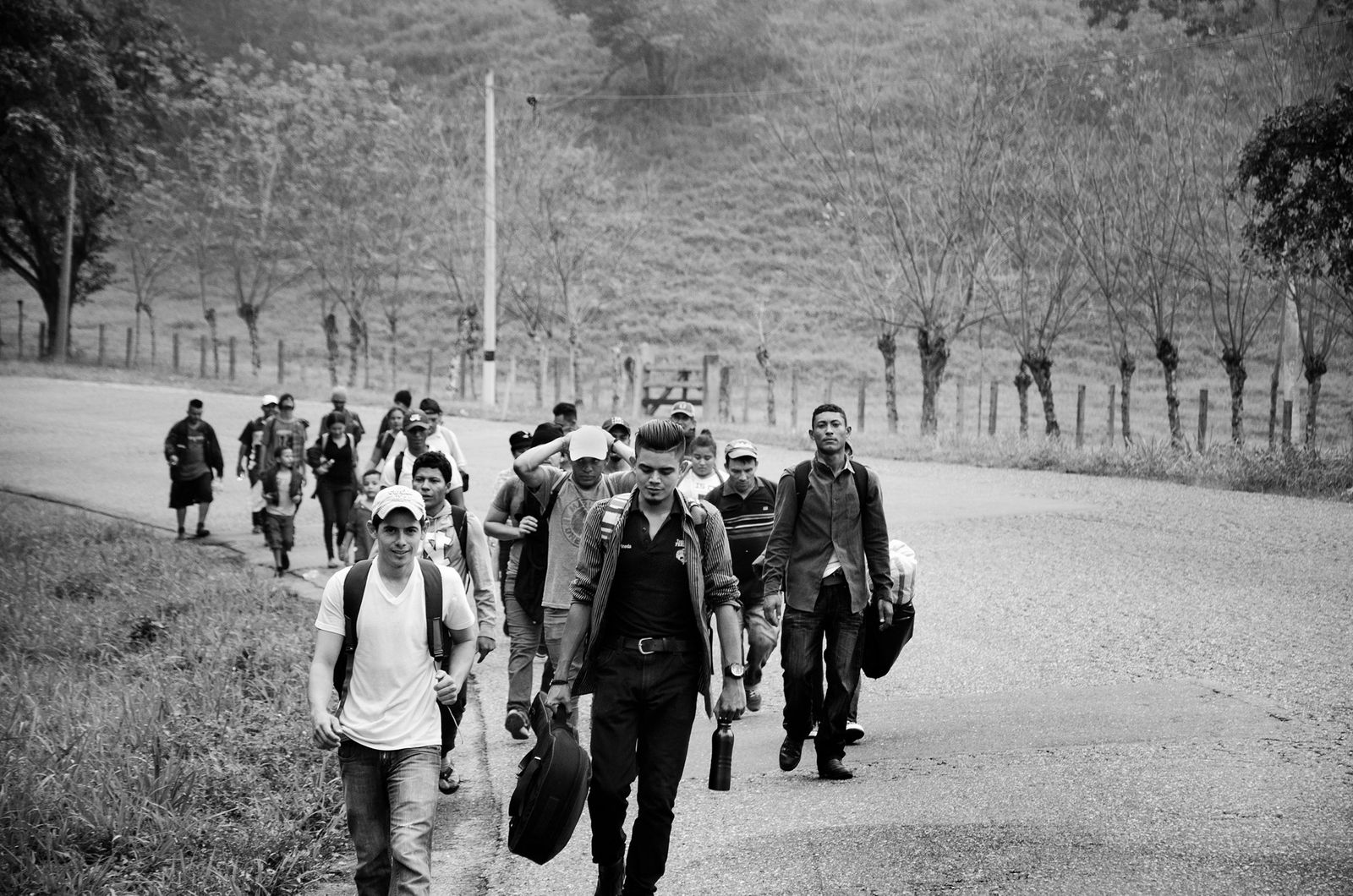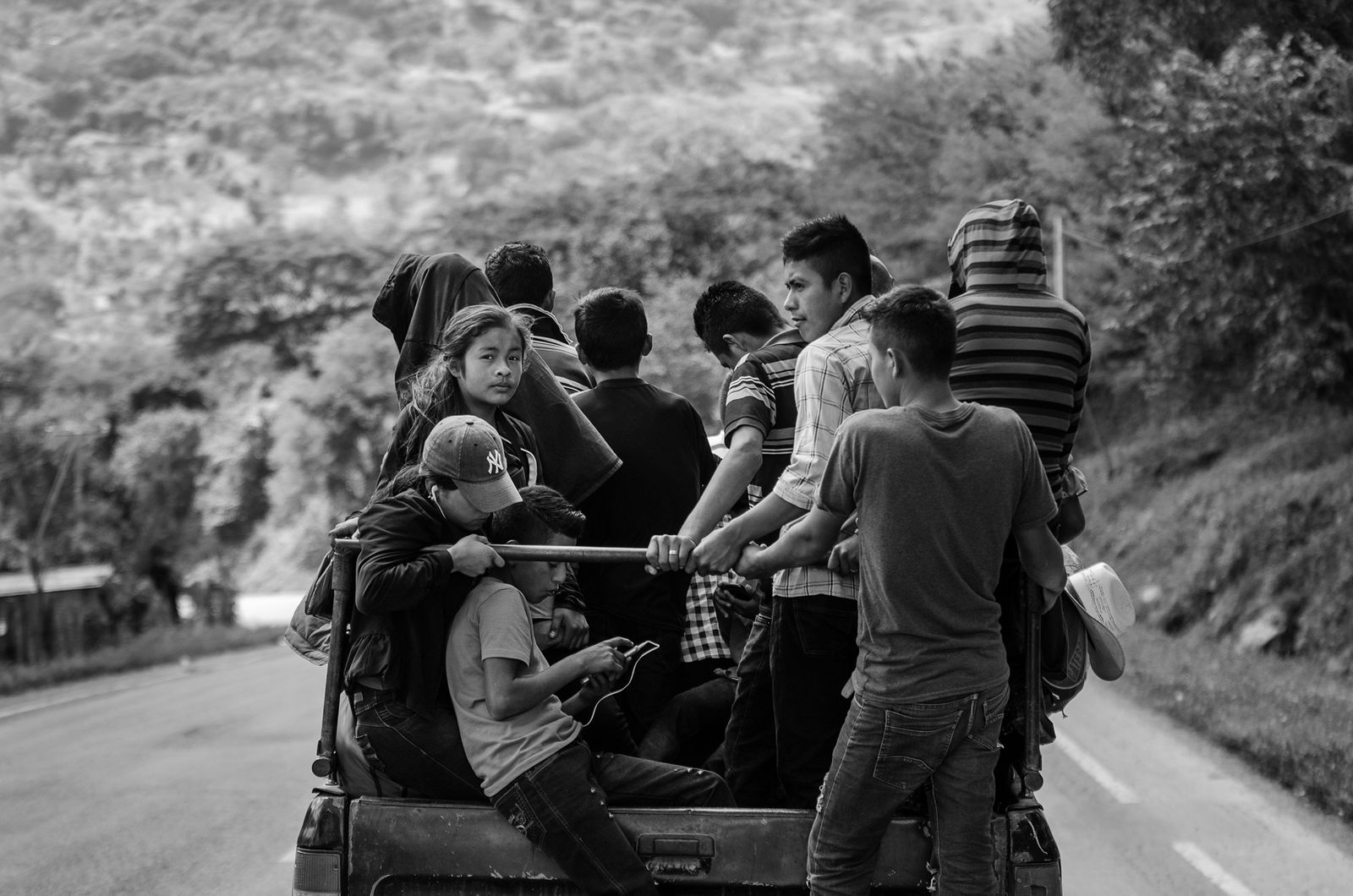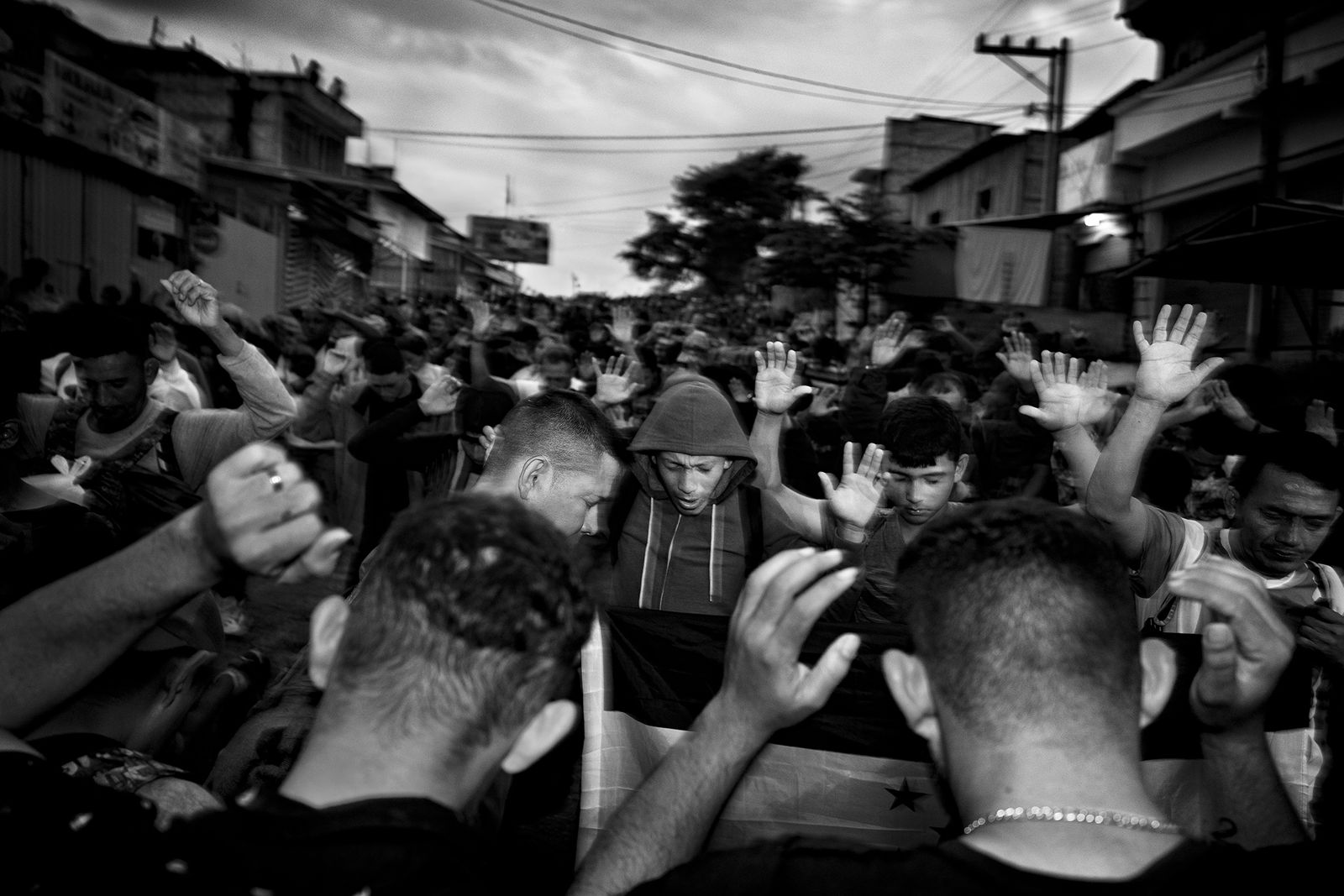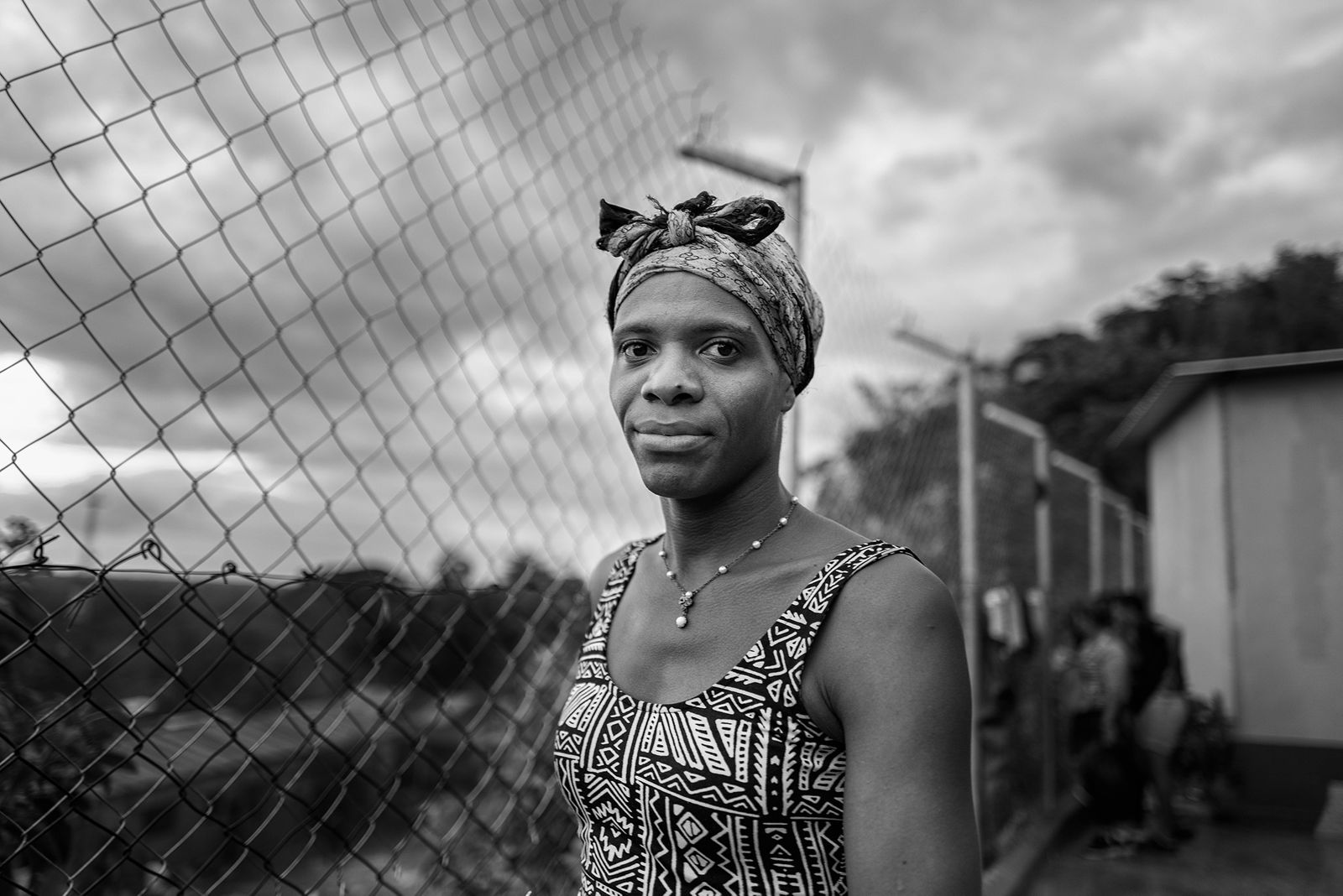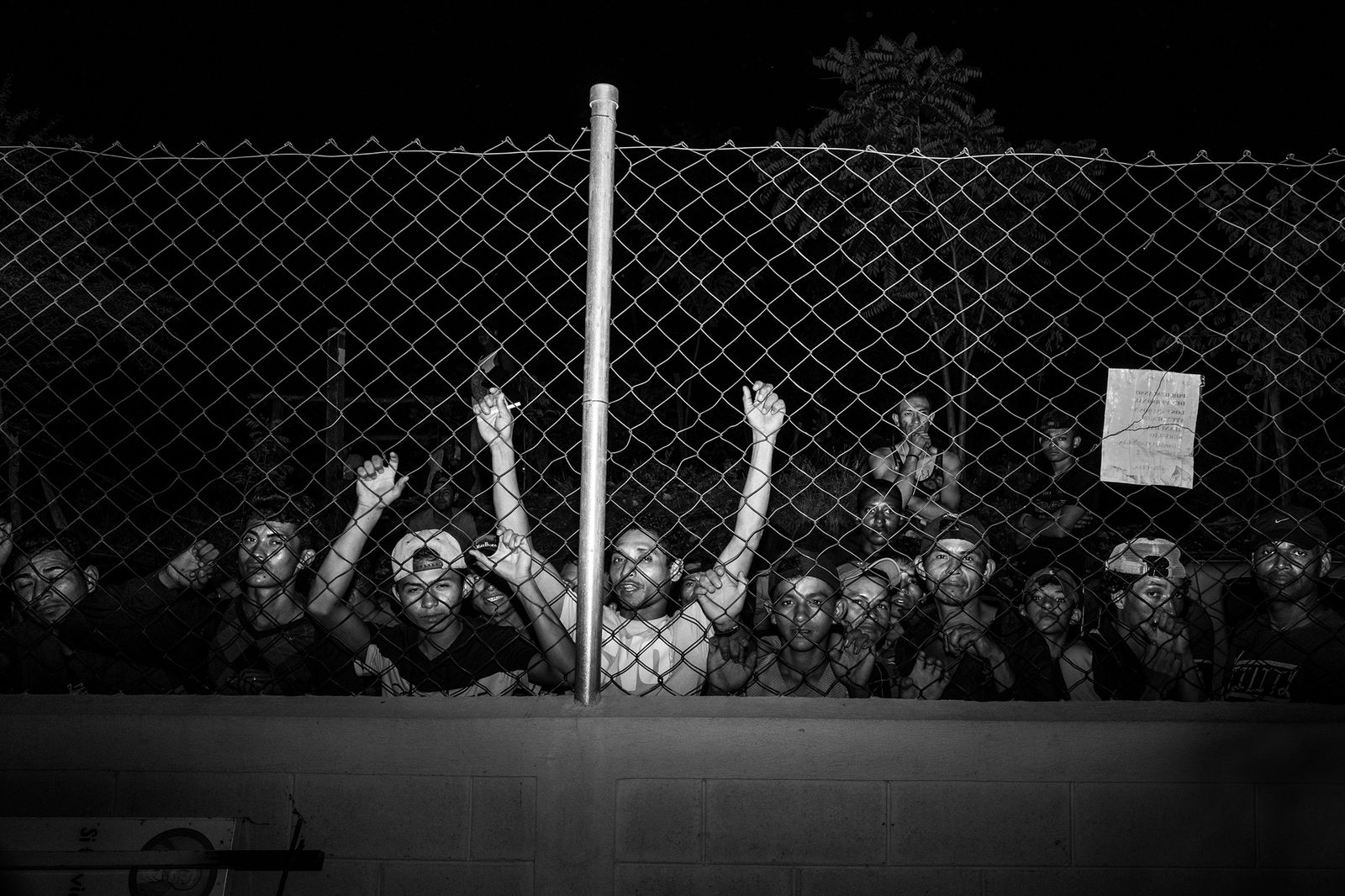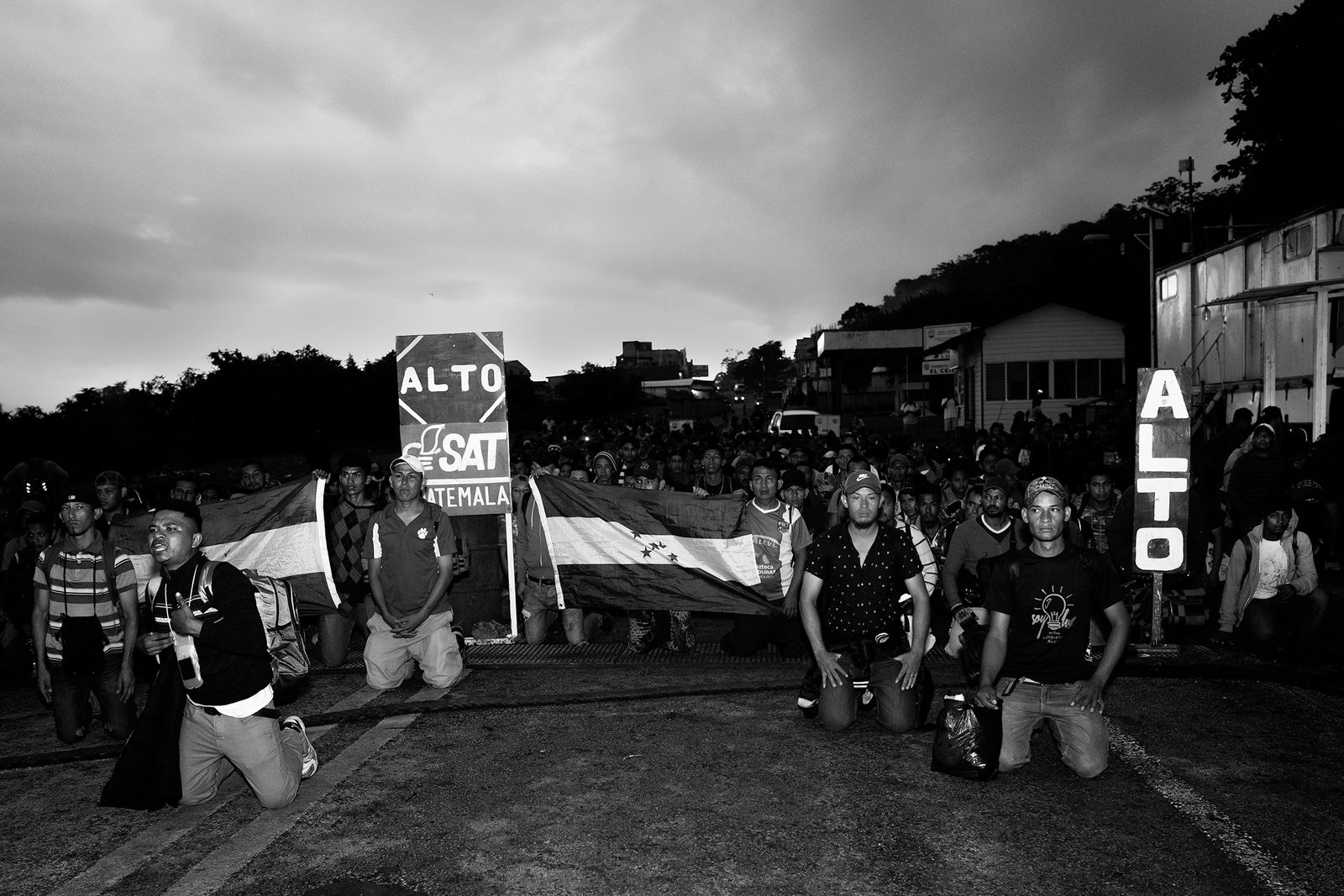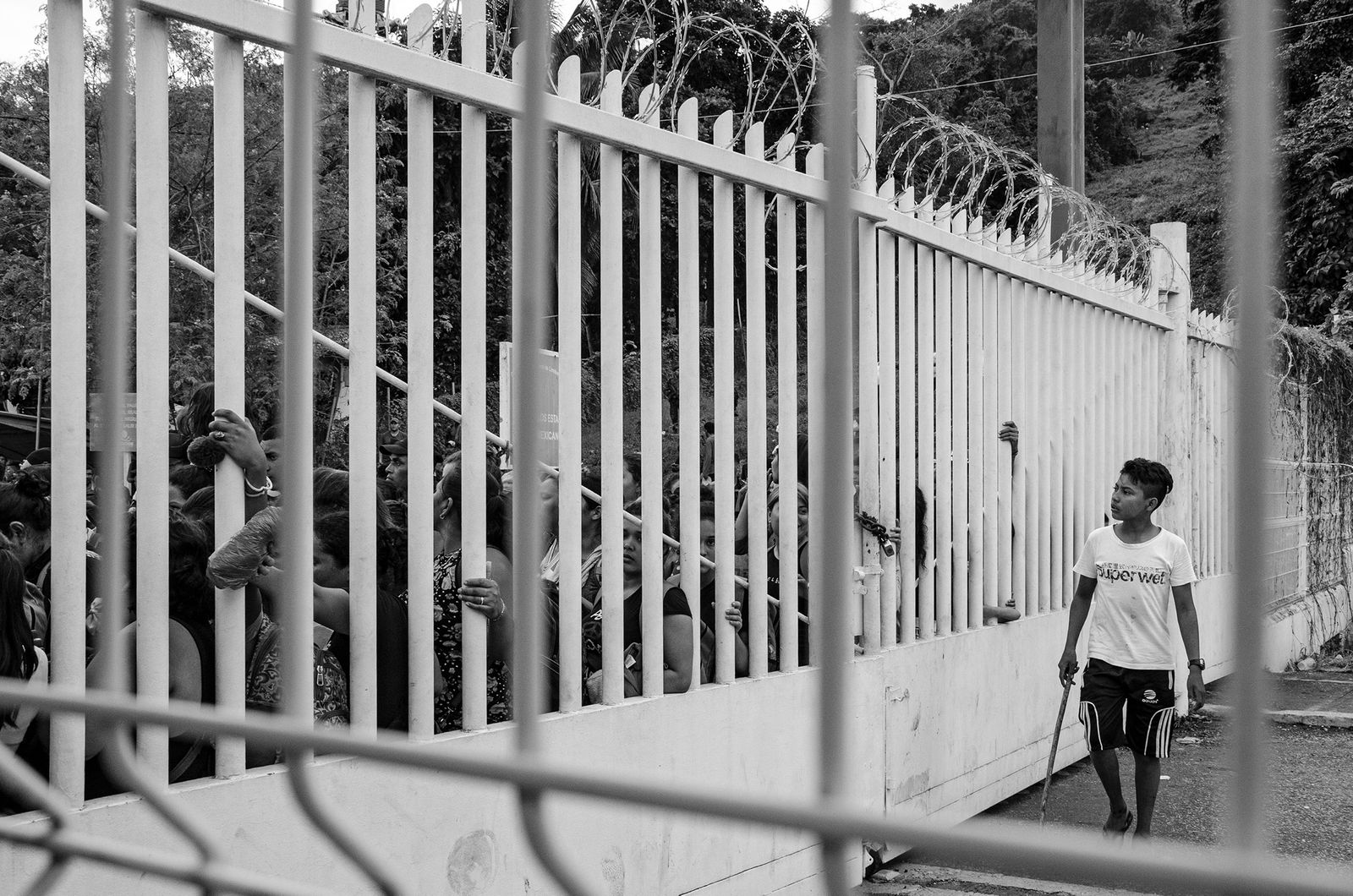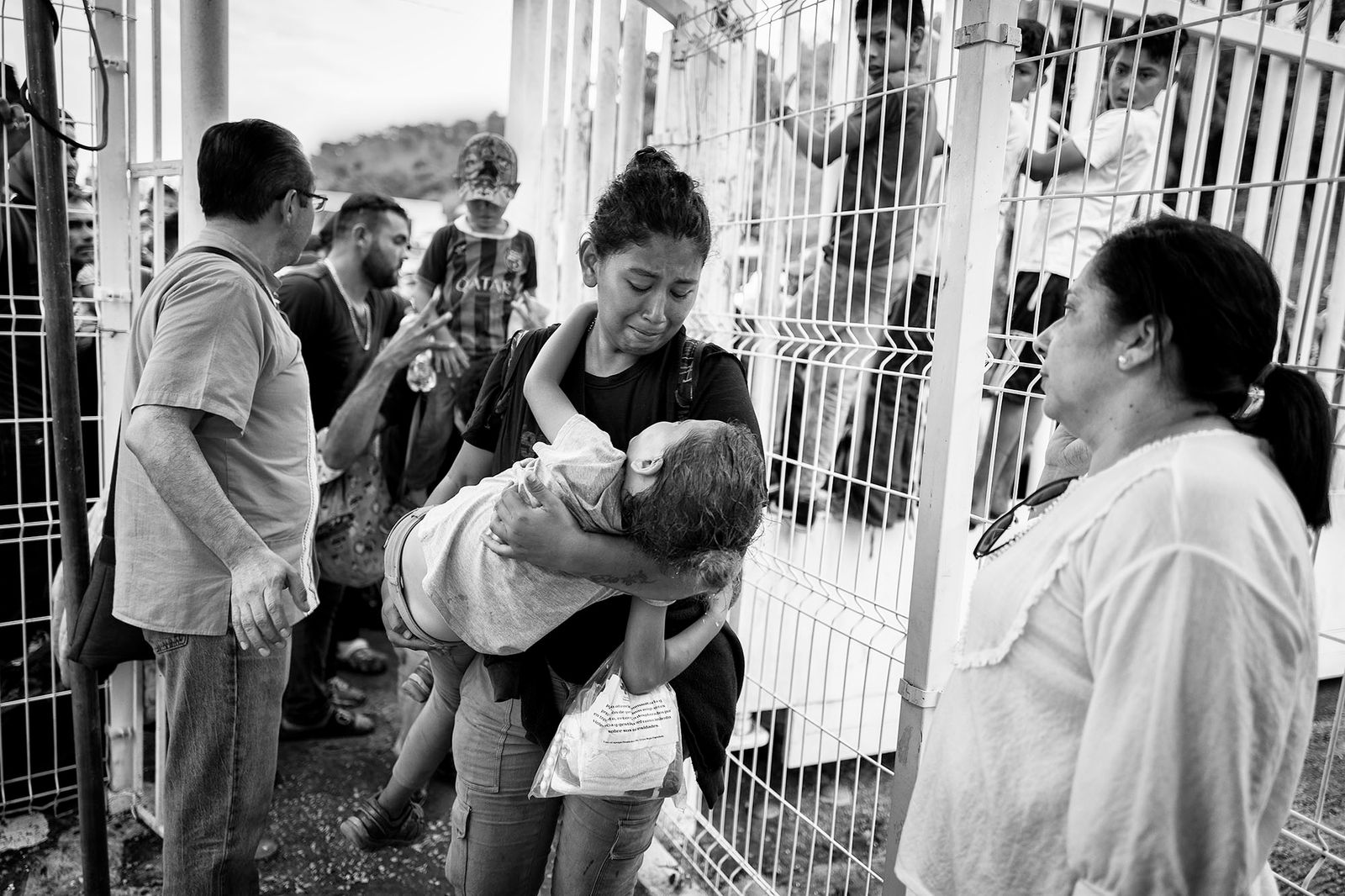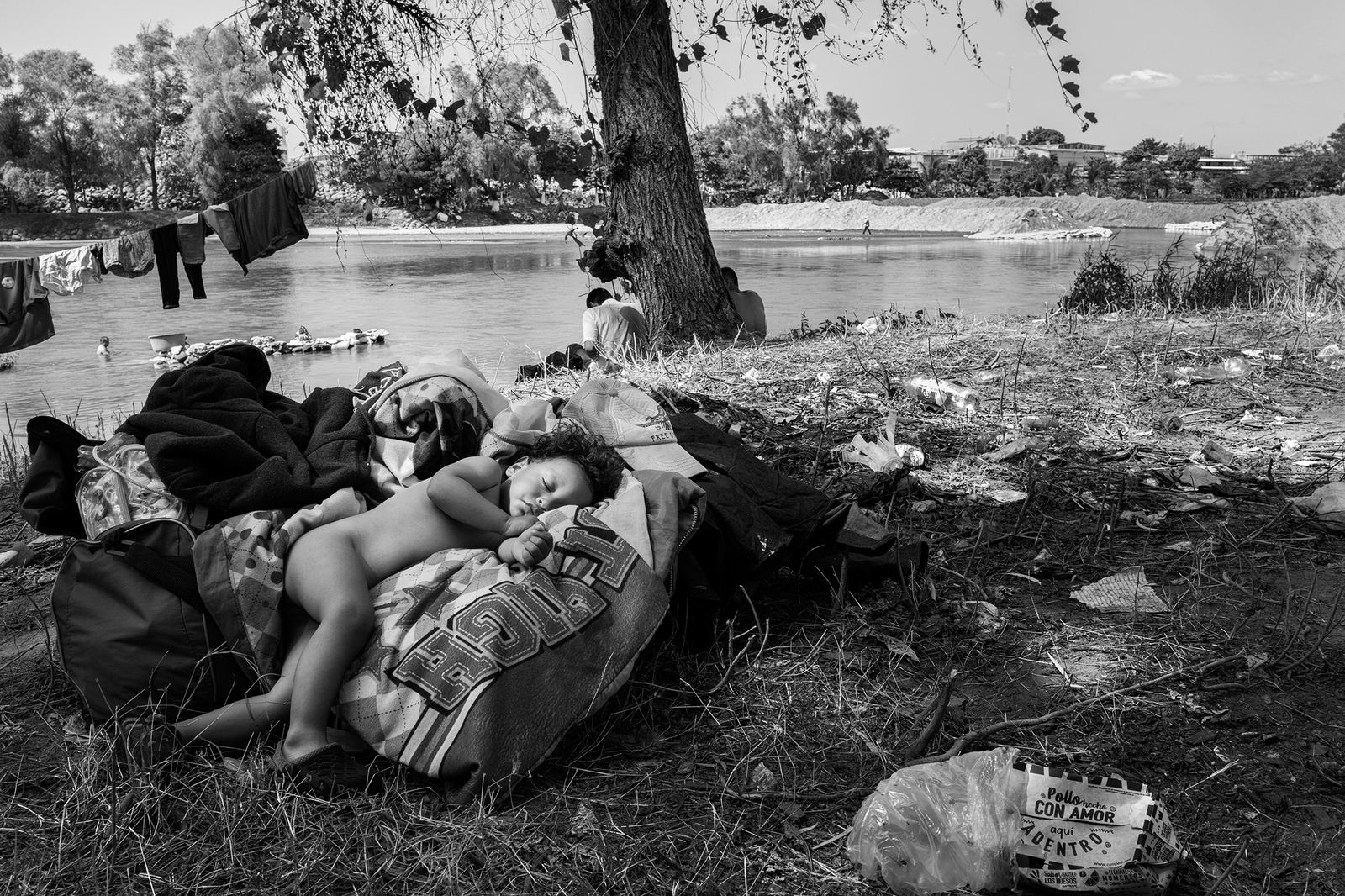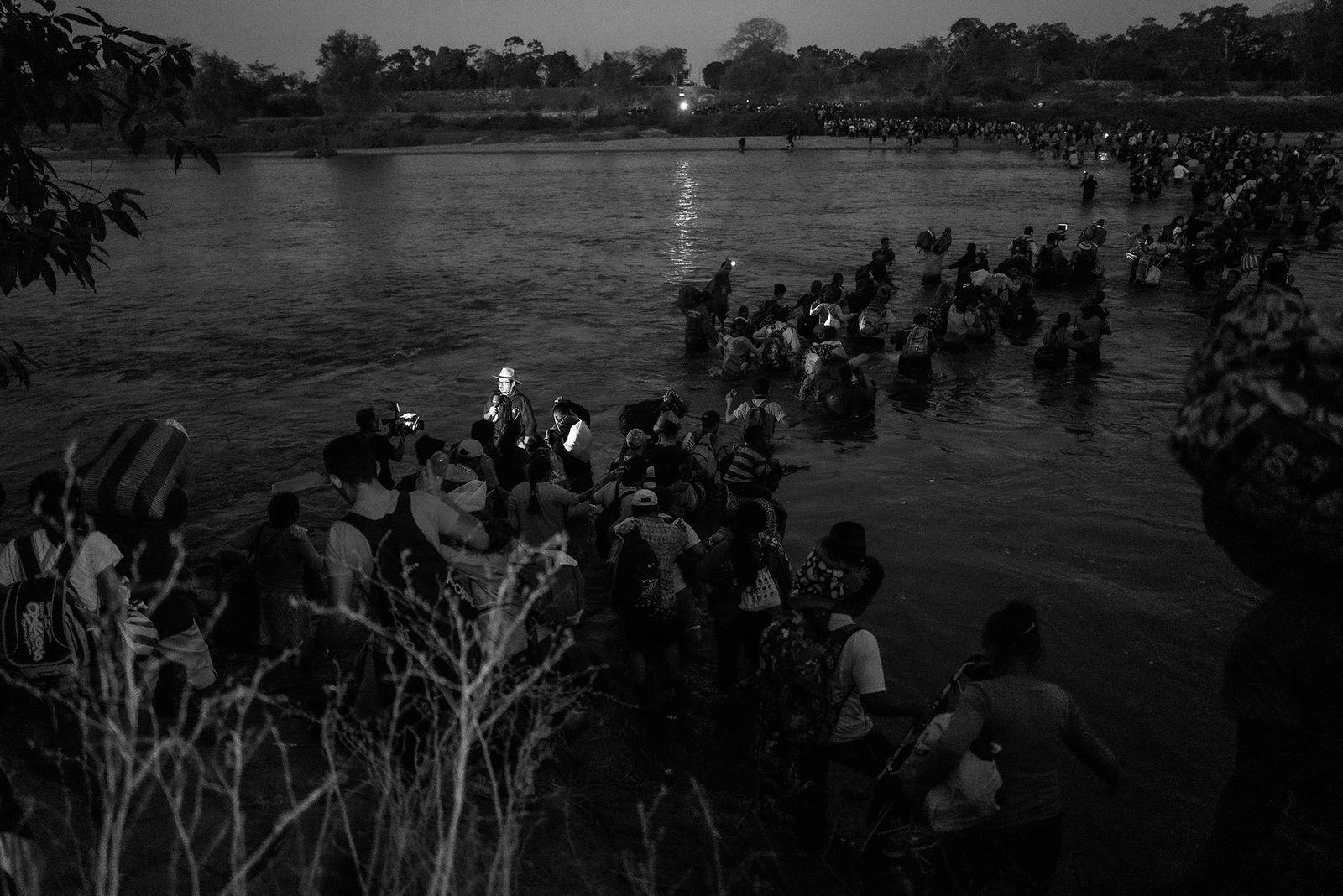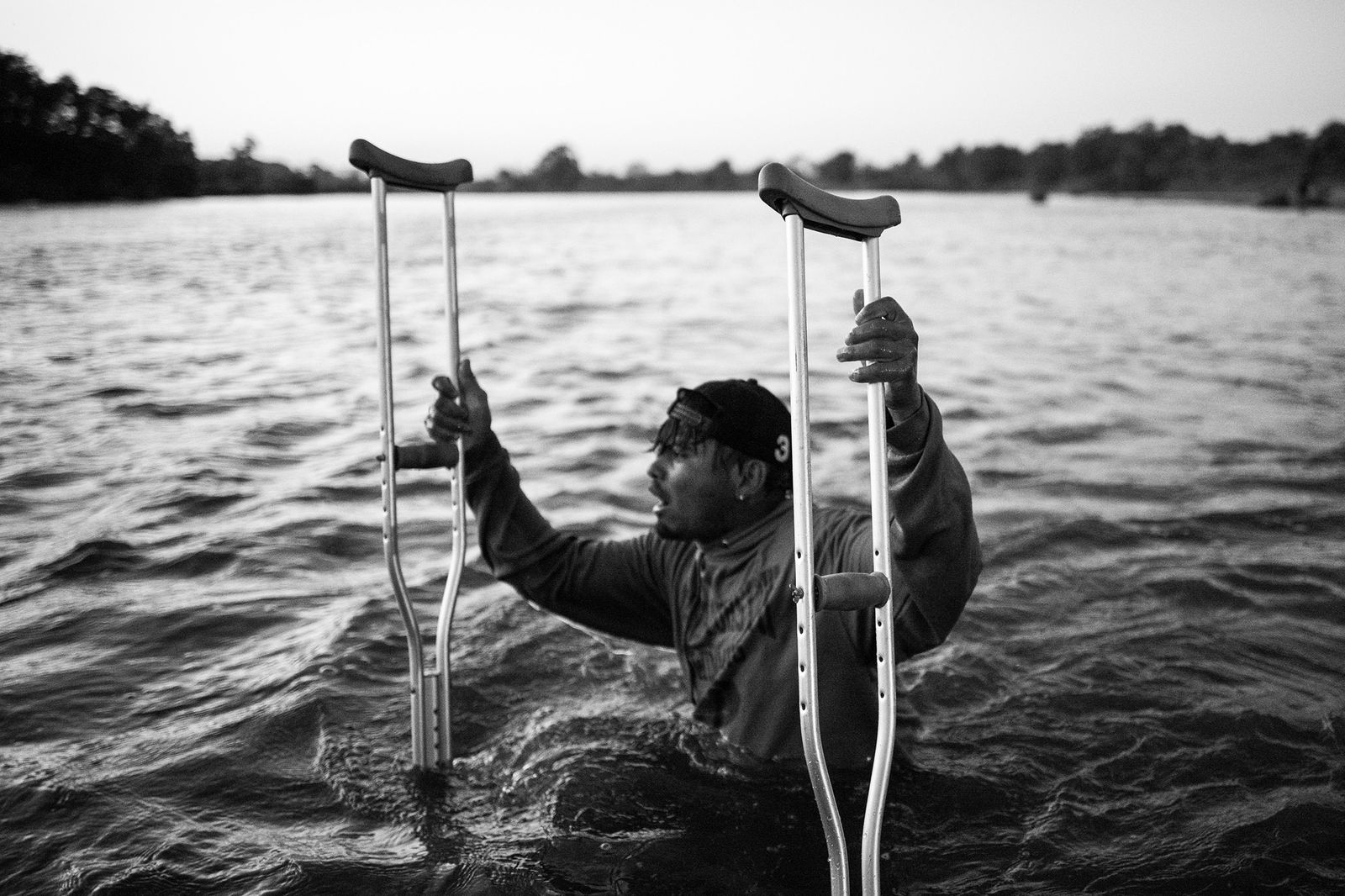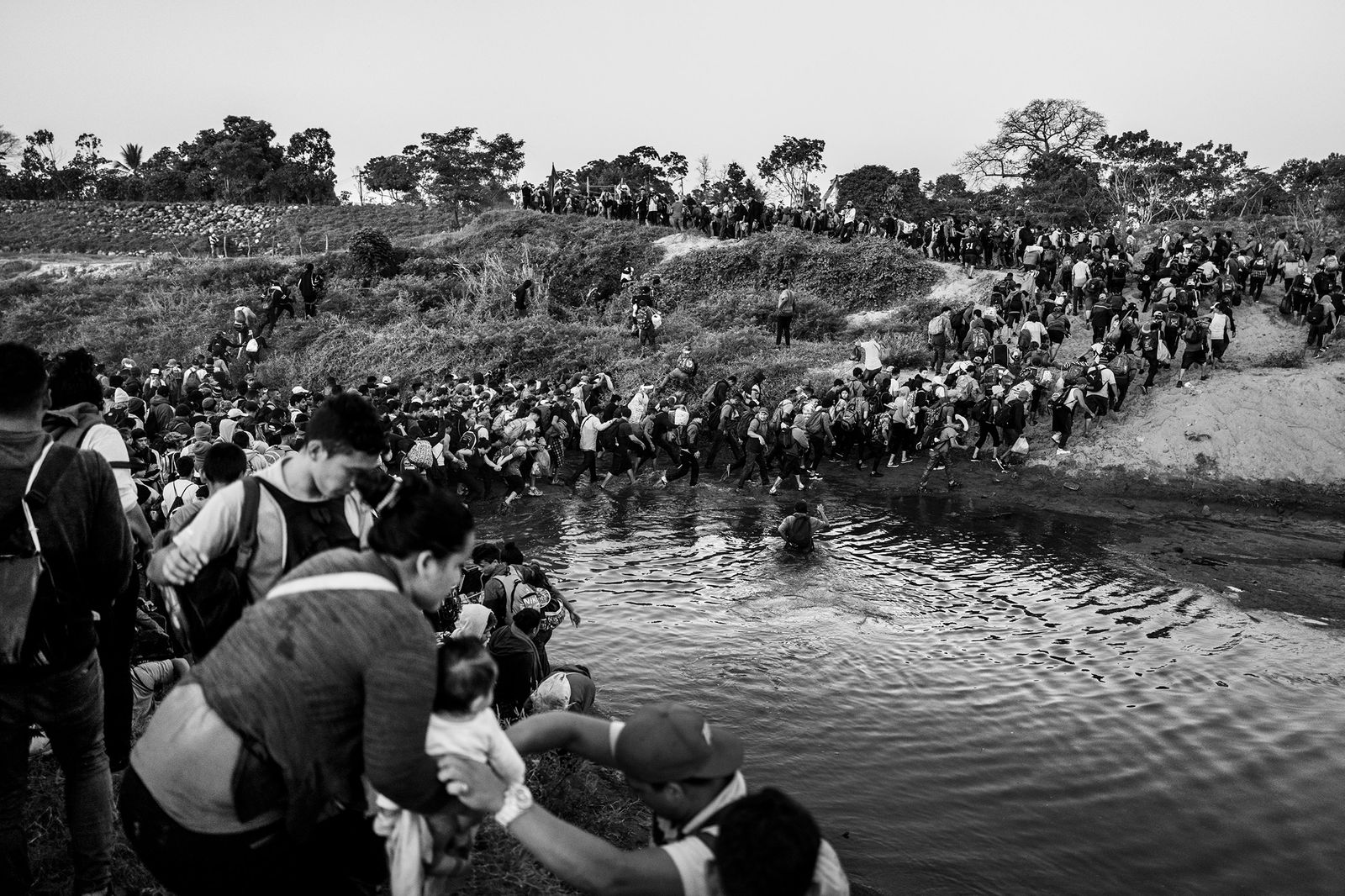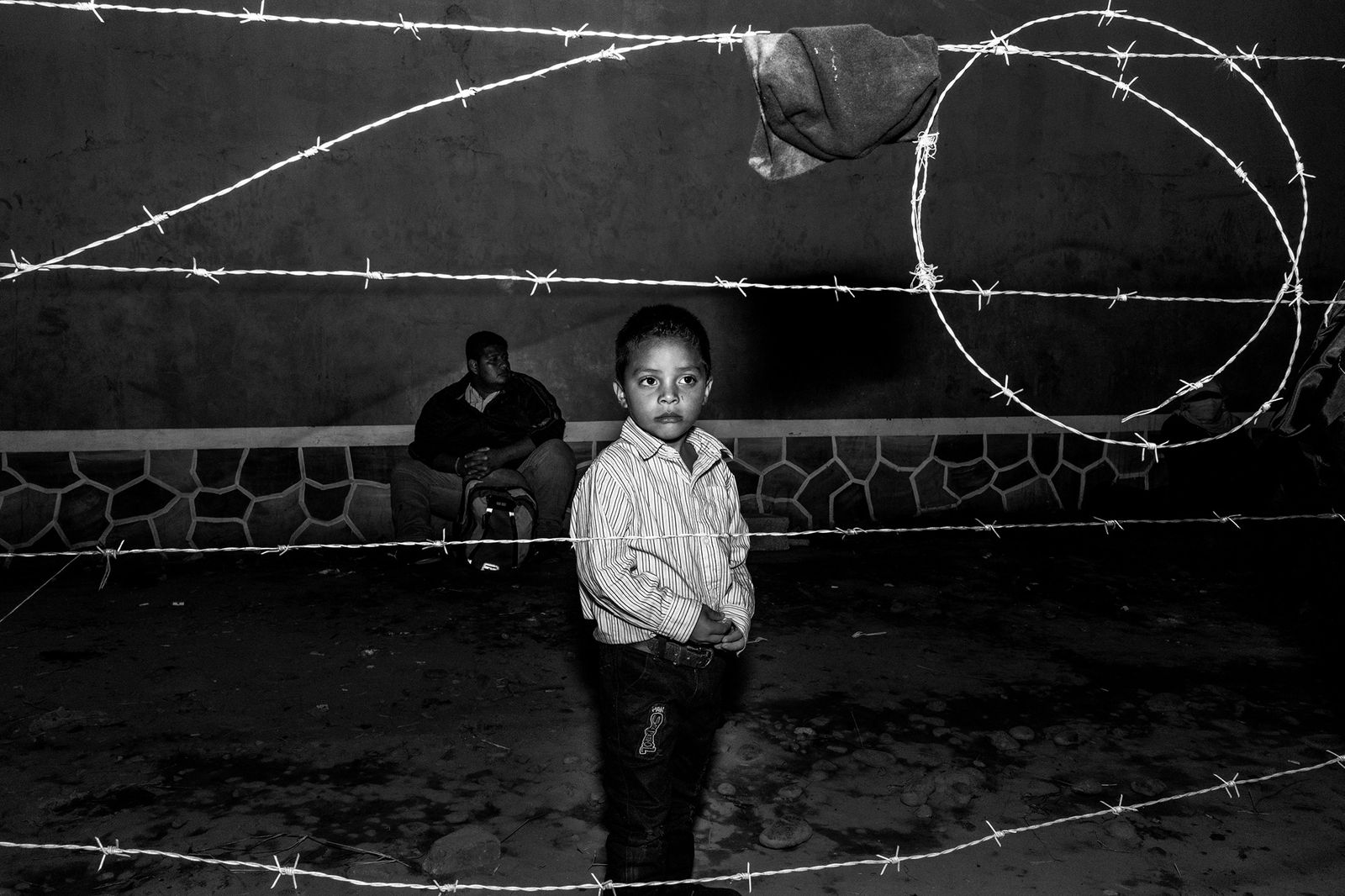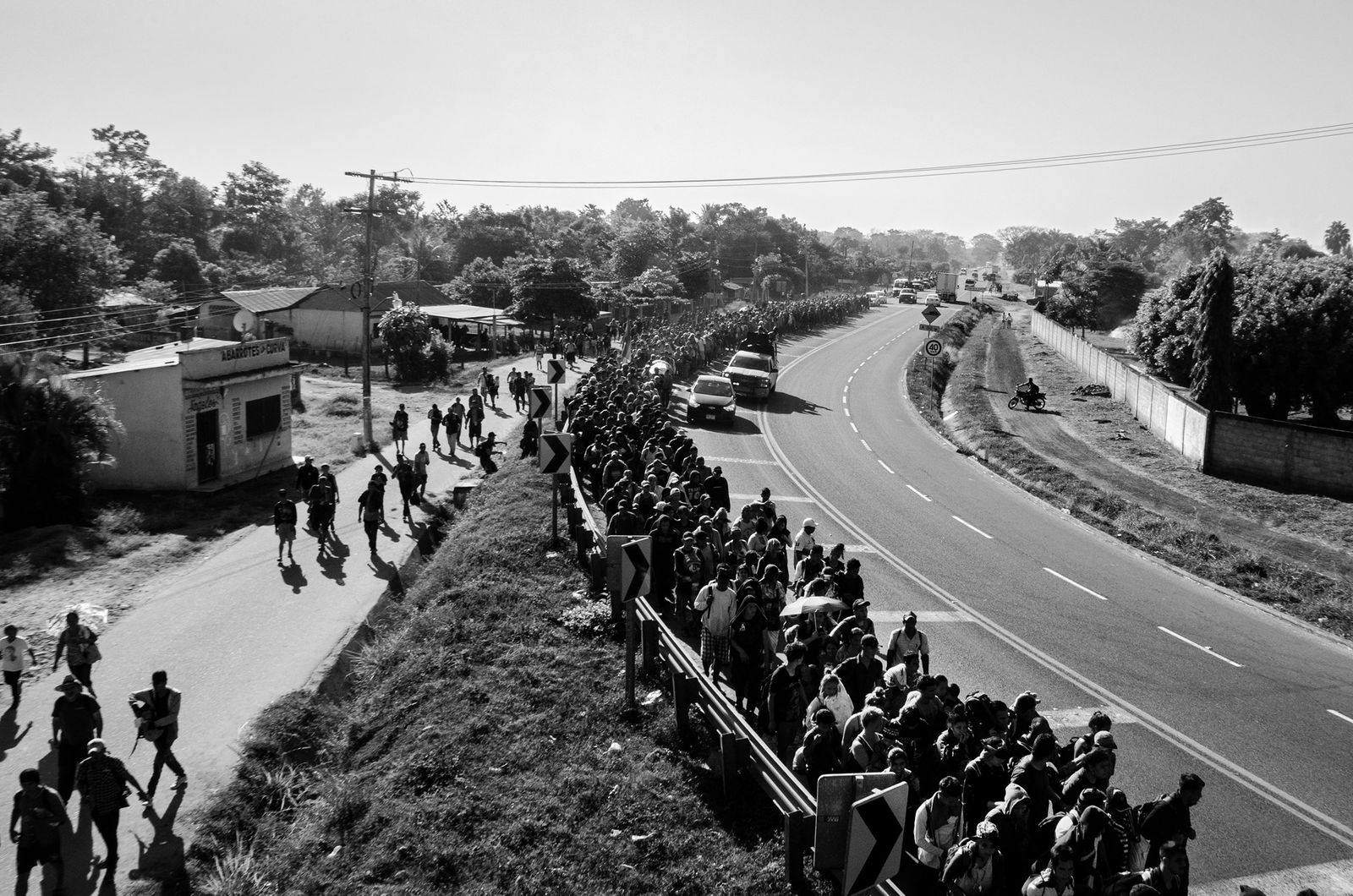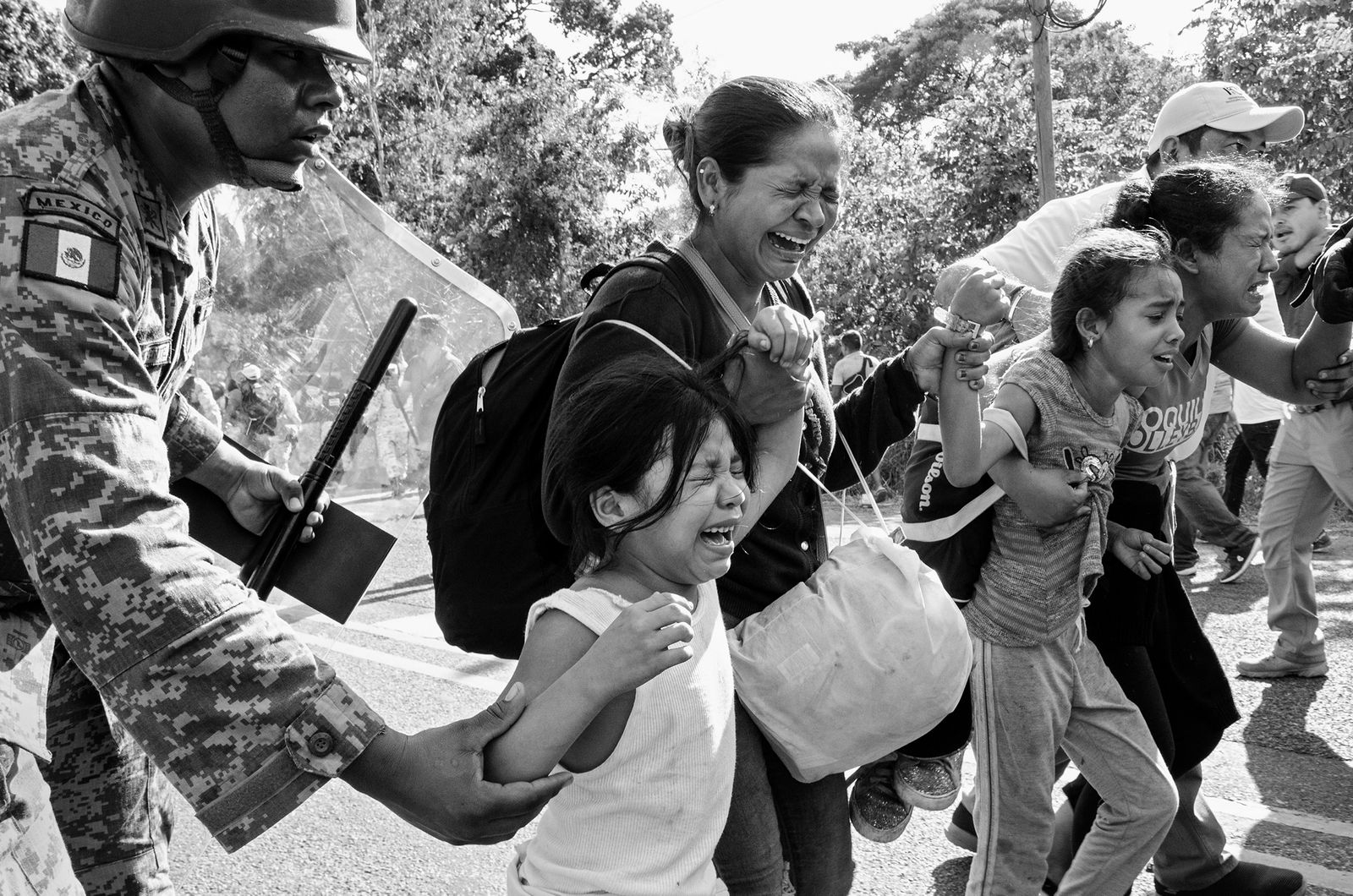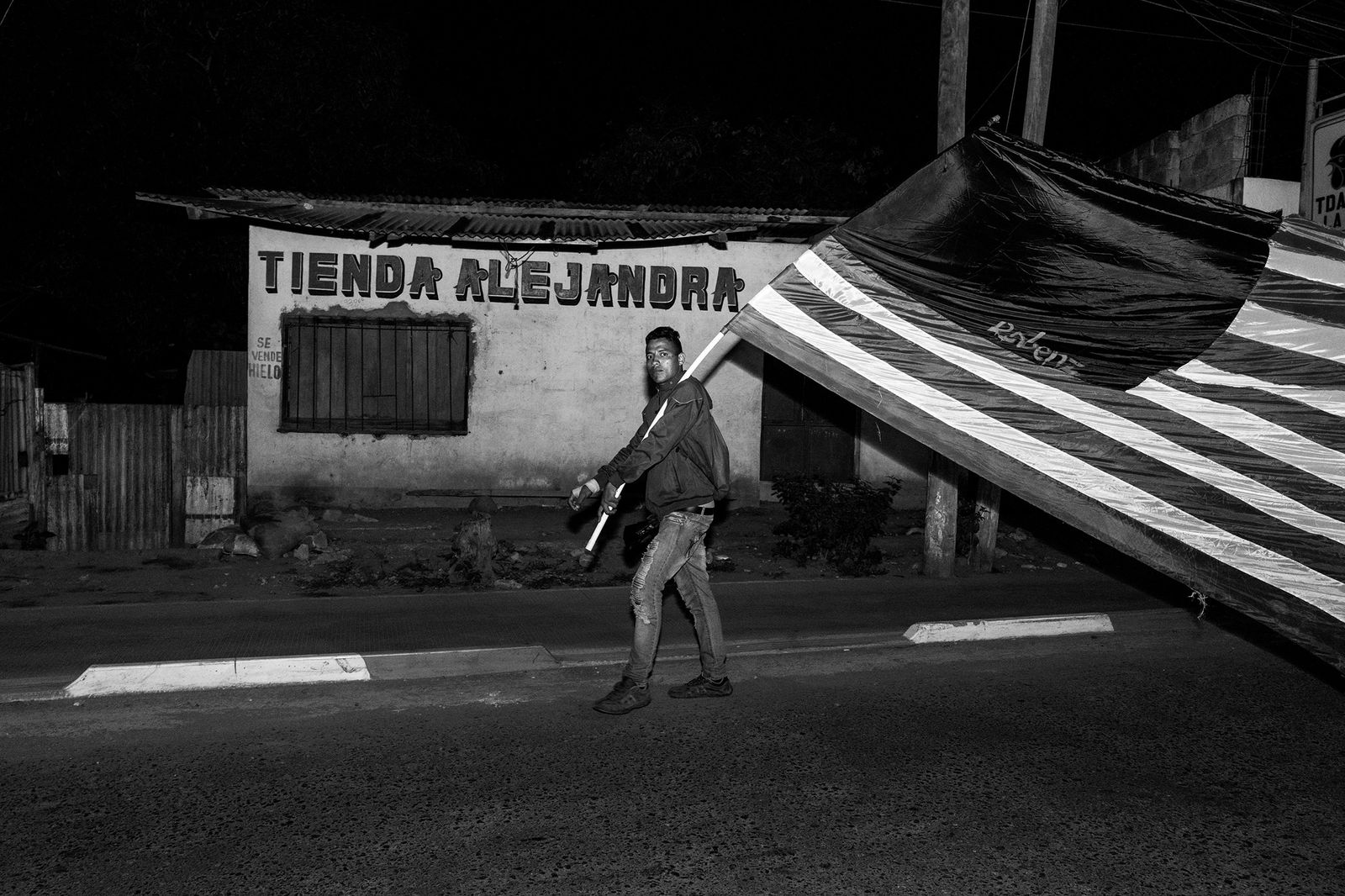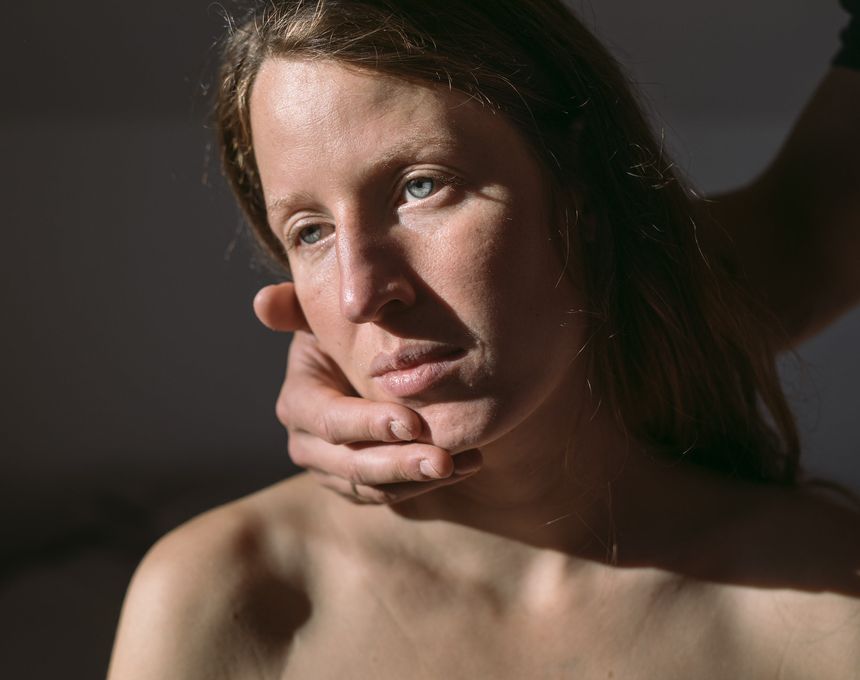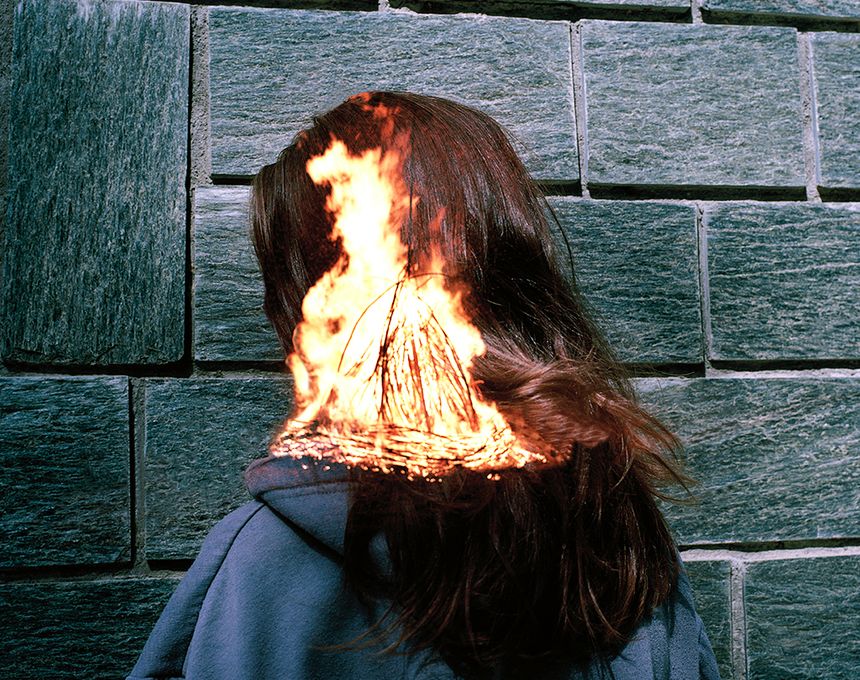La Caravana Del Diablo 2020
-
Dates2020 - 2020
-
Author
- Locations Mexico, Guatemala, Honduras
In January 2020, fleeing violence and poor economic conditions, Hondurans organized a migrant caravan. Trump threatened increasing tariffs on Mexican Goods if they didn't control the migrants.
In January of 2020, fleeing violence and poor economic conditions, Hondurans organized a massive migrant caravan that traveled through Guatemala into Mexico. After traveling for 8 days the caravan crossed the Suchiate River into Mexico and were met by the recently established Guardia Nacional comprised of former Federal, Military and Naval Police.
Mexican President, Andrés Manual López Obrador has historically called for safe passage for migrants, but when US President Donald Trump threatened to impose tariffs, Mexico reversed its policy and deployed soldiers to keep central American migrants from entering Mexico.
Migrants attempting to enter Mexico split into two major groups. The largest group crossed the Suchiate River and were tear gassed by the Guardia Nacional. Forced to retreat they waited by the river's edge for two days. Their second attempt across the river (at four in the morning) was a success but it was only hours later that the Guardia Nacional surrounded them, put them on busses and sent them back to Honduras.
The smaller group amassed in the border town of Tecün Umån in Guatemala and were met by Julio Cesar Sanchez Amaya the head of foreign relations in Mexico. He welcomed migrants in groups of 10 to enter Mexico and seek asylum. Migrants were briefly kept in detention centers and against Julio’s word they were deported back to Honduras without given the opportunity to seek asylum.
Trump has effectively barred asylum seekers from entering the US by threatening to impose tariffs and cut foreign aid to Central American countries. The human cost of Trump’s political agenda is denying people their fundamental human rights. For many asylum seekers, deportation will result in living a life of extortion, impoverishment and even death. The full effect of Trump's xenaphobic policies toward immigrants and asylum seekers will no doubt be felt for generations to come.
